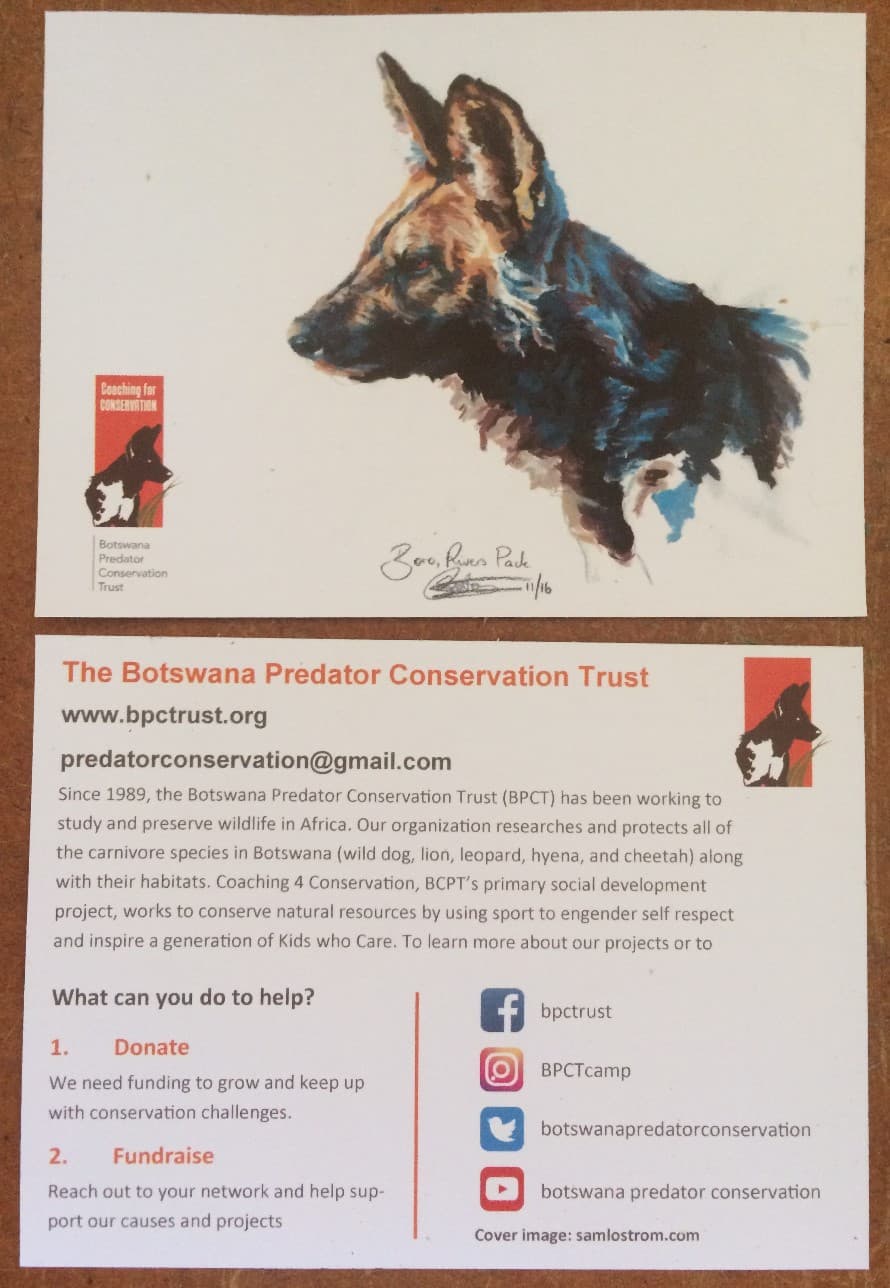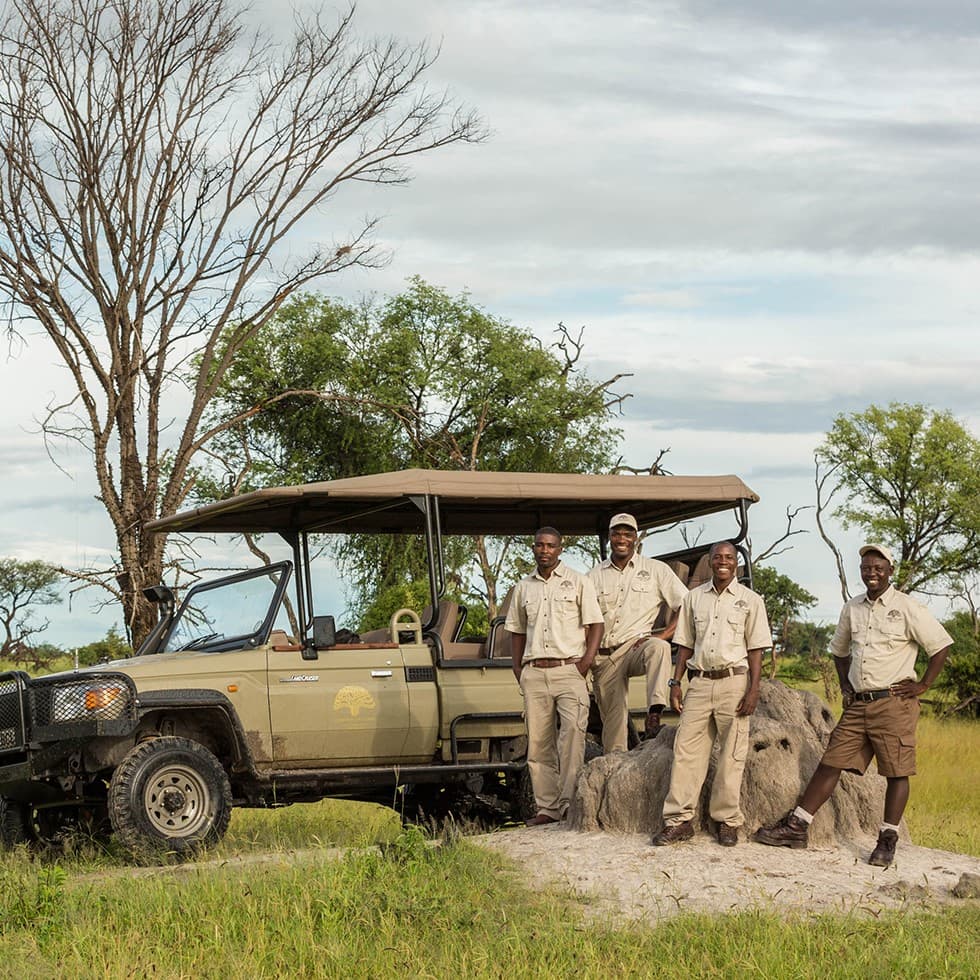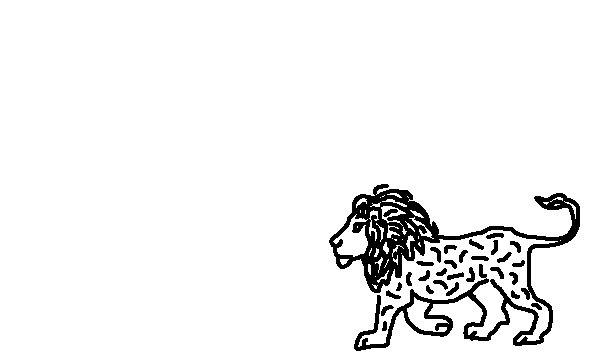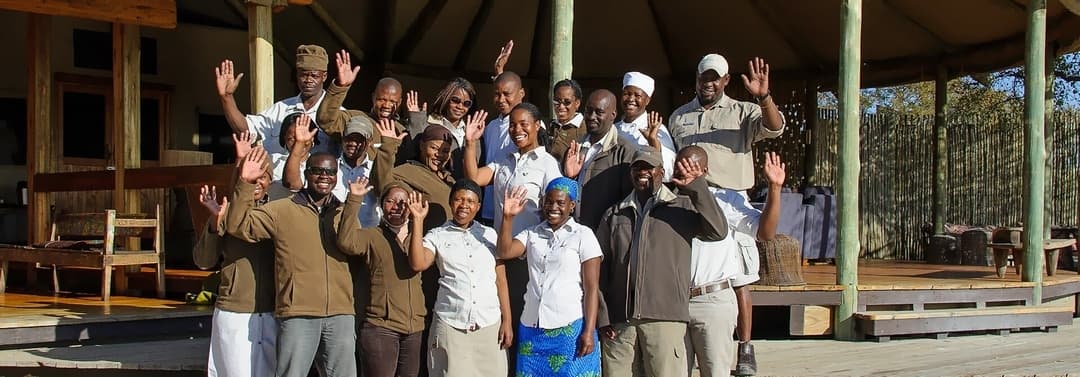Africa’s large carnivores are elusive. Most of them are primarily active at night, and all of them regularly traverse large home ranges through dense bush. These characteristics make locating and staying with members of the predator guild very challenging, even to our team of seasoned field researchers. To make matters more difficult, when driving off road to find predators in the diverse landscape of northern Botswana, we continually encounter tire-puncturing thorns, tall grass with hidden stumps, wide and flowing river crossings, deep sand, and deeper mud…not to mention the scorching sun!
Fortunately, BPCT is well equipped with battle-hardened field vehicles that have been modified over the years to endure the constant beating of the African bush. In addition, team members learn quickly how to safely and effectively adapt to the off-road driving conditions that our fieldwork demands. But we have one particularly invaluable, and perhaps surprising, tool in our toolbox for studying elusive predators in this area: the safari tourism industry.
Featured image above: Some wildlife guides and management staff of Wilderness Safaris, who’s nearby Santawani Lodge is a key player in our local fieldwork for carnivore sightings.
Visitors from around the globe are drawn to the Okavango Delta by its varied habitats and the rich wildlife they support. Near the top of most visitors’ lists is seeing Africa’s iconic large carnivores: lion, hyena, cheetah, wild dog, and leopard and the detailed study of these predator species has been the focus of the BPCT for nearly 30 years. As such, our team is routinely asked to provide updated findings and conservation overviews at Botswana’s wildlife management forums, local and international ecology conferences, and also at the occasional tourist camp filled with attentive guests.
Over the years, we at BPCT have utilized a number of outreach efforts for sharing our findings, and importantly, also for seeking details about carnivore sightings from the public (sometimes called “citizen science”), which for us is the tourism sector. We print and distribute pamphlets that describe the goals and importance of our work. We have created and posted laminated posters for various projects (Photo 2 and 3) at key locations and we visit each of the seven nearby (within 3hrs driving time) tourist lodges to update their staff on BPCT’s projects. We speak with camp management and guides and always learn from them about the carnivores in their area. We often give short presentations of our research to staff and their guests. Below are two examples of mutually beneficial partnerships forged between BPCT and the tourism industry.

Flyer for African wild dog dispersal study, laminated poster at the entrances to the Moremi Game Reserve in an effort to glean sightings information from park visitors.

Outreach postcard featuring BPCT overview and contact details as well as original wild dog artwork by former research assistant Samantha Lostrom.
First, we have established a great working relationship with our nearest neighbor, Santawani Lodge (operated by Wilderness Safaris). Given that our camp is located in the same concession as Santawani, we see their guests out on game drives almost daily. We also communicate with each other about sightings and share thoughts about what is happening in the area. Furthermore, in September 2017, we began an intensive 3-month citizen science partnership with Santawani Lodge. Each guest group (3 days each) would have an introduction to our research in exchange for guests’ photographs of their carnivore sightings. Our longitudinal ID databases are then used to determine the identities of sighted predators, sometimes their condition, and location. Given that Santawani tourists and their guides spend 8 hrs/day in the field every day on game drives, this partnership almost doubles our own efforts to monitor the local predators. Importantly, it also provides guests with the added benefit of hearing first hand about the conservation value of our research.
Second, and most recently, we have built an especially helpful collaboration with Gomoti Plains Camp. Gomoti Plains was opened just a year ago by Machaba Safaris and is located approximately 12 km east of our research camp across the Gomoti River in NG32. The Gomoti River is flooded and impassable by vehicle during much of the year due to the Okavango’s annual flooding. So, it became strategically important for us if the management and guides on the other side of the Gomoti would share their sightings with us. Fortunately for us, their passion and interest in the predator guild vastly exceeded our expectations.
It was clear after meeting their team shortly after they opened that the staff at Gomoti Plains was eager to collaborate and our partnership has grown stronger from the beginning. They now inform us of predator sightings, identities and movements on their side of the river, on a weekly basis and their updates have yielded valuable information for our team, especially the African wild dog dispersal & demography project. Gomoti Plains guides and guests voluntarily collecting and sharing photographs especially of endangered African wild dogs has enabled us to identify individuals from the photos and determine pack compositions from their sightings.

Guides at Gomoti Plains Camp, a partnering safari lodge that heavily contributes to our carnivore research east of the Gomoti River’s main channel.
Over the years, we’ve learned that intentional collaboration with visitors and guides in the safari industry can be a win-win for everyone. Guests get a unique “inside look” at some of the results and impacts of one of the longest running conservation organizations in Africa, and our team benefits immensely from additional carnivore sightings and the wealth of information gleaned from them over time. We are better for working together.


Dive straight into the feedback!Login below and you can start commenting using your own user instantly